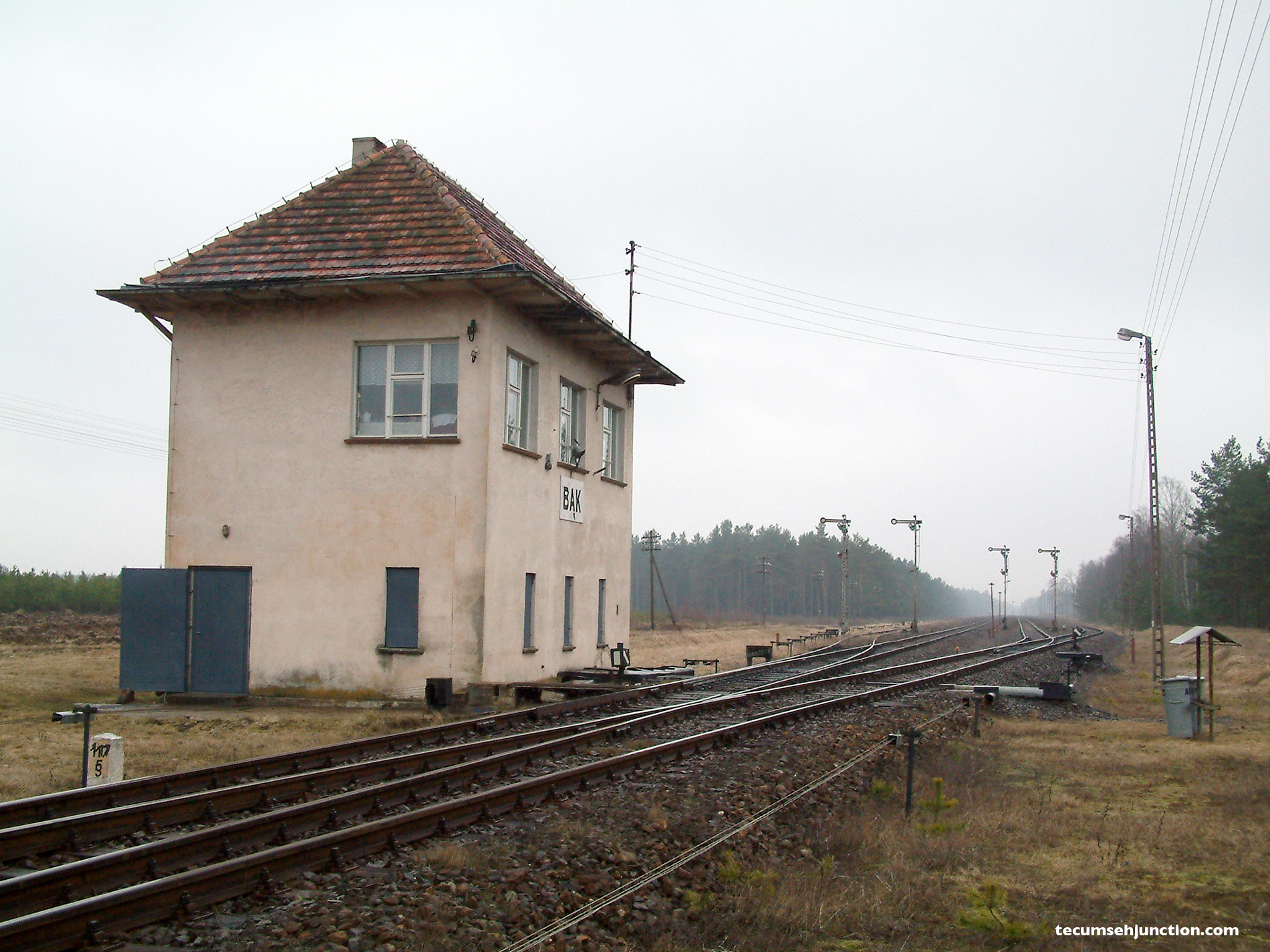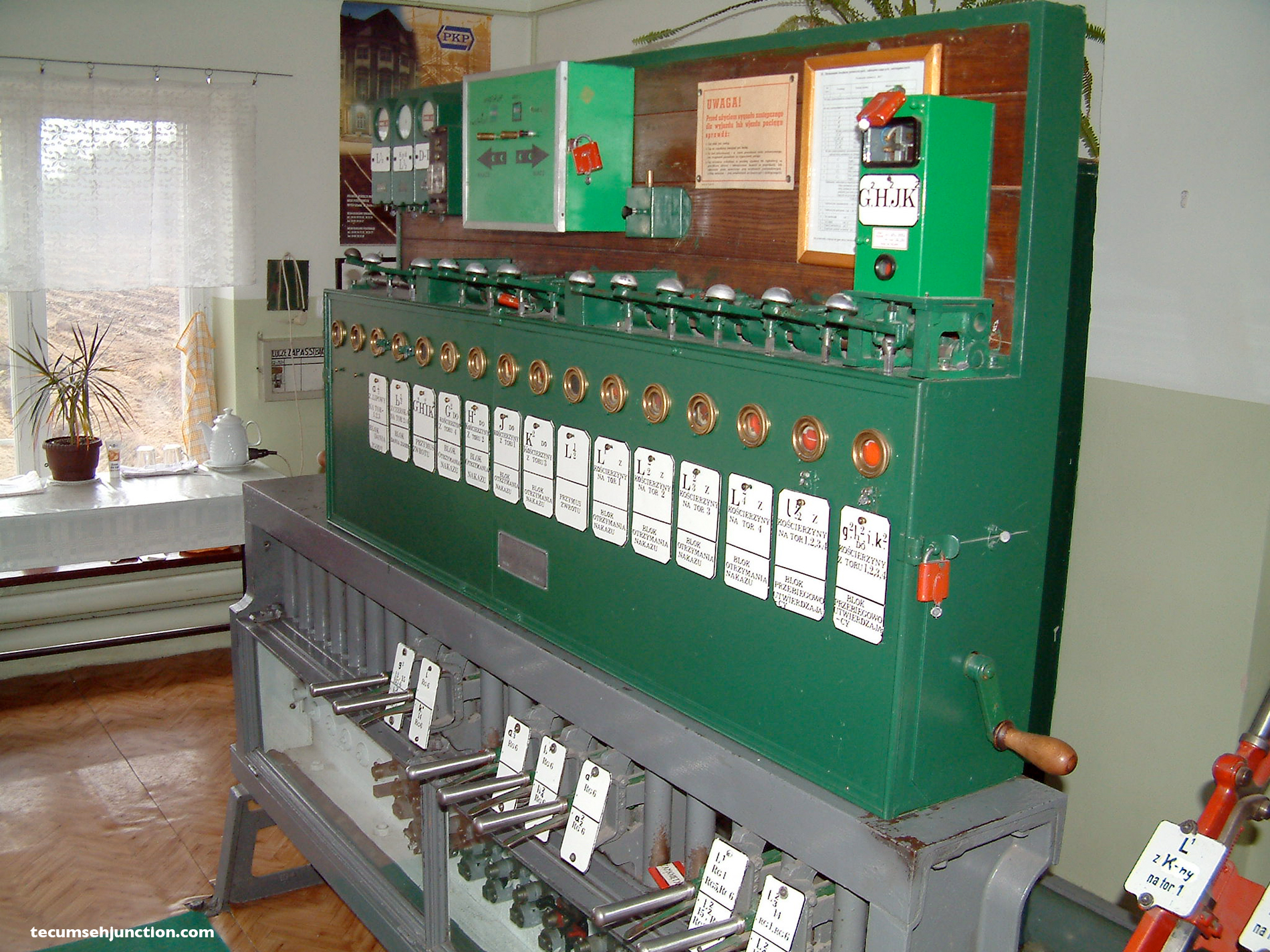In the early 2000s, the Polish State Railways (PKP) were quickly cutting back, and in some cases completely closing, passenger services on branch and secondary railway lines. I made a few trips to visit some of these lines in my area of north-central Poland, to try and ride and photograph the operations before they disappeared. On 28 March 2004 I visited the country junction station of Bąk (pronounced “Bonk”).
Bąk is located on the north-south “coal line” from Silesia, north through Bydgoszcz to Gdynia. Bąk is also the junction for an additional connector line running southwest to the nearby town of Czersk, where it connected with the east-west line from Tczew to Chojnice (part of the former German “Ostbahn”), as well as the secondary line to Laskowice Pomorskie.
Both of the railway lines serving Bąk were relatively late additions to the railway map, Czersk-Bąk opening in 1928, and the coal line opening in its entirety in 1930. (The line from Czersk was also used to bring in construction materials for the coal line.)
Long-relegated to the status of a secondary line, by the early 2000s there were only local passenger services though Bąk. Several pairs of trains a day operated between Bydgoszcz and Gdynia on the coal line, and there were also passenger trains on operating Czersk-Bąk (and on to Kościerzyna via the coal line).
At the time of my visit in March 2004, the through passenger trains from Gdynia to Bydgoszcz had been cancelled. A pair of trains still operated on the Kościerzyna-Wierzchucin section of the line, along with 3 pairs of trains to Czersk (one pair running through to Kościerzyna). To travel onward from those stations, a change of trains was necessary.
My visit was part of a trip down the line from Gdynia to Bydgoszcz. I arrived at Bąk on a Kościerzyna-Czersk train. Alighting in Bąk, I had about an hour to wander around before catching the following Kościerzyna-Wierzchucin train. The photos below represent what I was able to see on my brief visit that day.
Bąk station
The Bąk station is surrounded by forest, and there is no town at the location (the actual village of Bąk lies about 6 km. south/southwest). The station complex consists of three passenger platforms, a station building including a signal box, a toilet outbuilding, and a goods shed. The signal box in the station (Bk) controls the south end of Bąk junction, including the line to Czersk and a level crossing. At one time a long siding also extended from the south end running west to a former military air base.

A PKP local train from Kościerzyna to Czersk at Bąk. On this cold March day, the steam heating was appreciated.

The local train to Czersk departs from Bąk. It will curve to the right just past the little green switching locomotive. The coal line to Wierzchucin and Bydgoszcz runs straight south here.

The timetable board at Bąk, showing arrivals (przyjazdy) in white and departures (odjazdy) in yellow. By this time, cutbacks had already led to the destinations of Bydgoszcz, Laskowice Pomorskie and Gdynia being scraped off the board.

The ticket office window at Bąk—by this time sale of tickets here had been eliminated as a cost-saving measure. Tickets had to be purchased from the train conductor.
Bąk North signal tower
The Bąk North signal tower (Bk 1) controlled the switches and signals at the north end of the station, for trains travelling on the coal line in the direction of Kościerzyna. The tower operator was kind enough to invite me up for a visit, and I was able to photograph the original 1920s-era signalling equipment (albeit with additions of more modern communication equipment).
The Bąk station signal box
Walking back to the station to catch my train, I had a few minutes and was invited to all see the interior of the station signal box (Bk).

My train to Wierzchucin arrives from Kościerzyna—time to go, after an enjoyable visit to this small station.
Postscript
Soon after my visit, passenger services south of Bąk to Wierzchucin were cancelled. Passenger trains on the line to Czersk continued to operate for a few years more. Bąk has been without regularly-scheduled passenger service for over a decade now.
With the disappearance of passenger services, the signalman position at Bąk North tower was eliminated by 2005, and the switches at that end of the station were manually thrown by the station signal box operator when necessary. In 2010, the north end of the station was rebuilt and colour light signals installed; it is now operated remotely from the station signal box, and the Bąk North tower was permanently closed (though still standing in 2020).
Freight trains continue to operate through Bąk.
Track Diagrams and Maps
Here is a link to a track and signal diagram of the Bąk station, circa 12.2007, from the site https://semaforek.kolej.org.pl/wiki/, drawn by Adrian Karwat.

Bąk, as seen on a 1952 railway map:

3 Comments





























Leave a Reply